-

Sea Sponges for Bath & Shower (16)
-

Silk Sponges for Cosmetics & Make-Up (4)
-

Sponges for Household, Auto, & Arts (6)
-
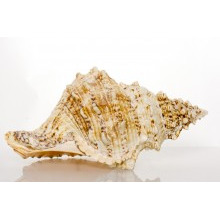
Decorations from the Sea (14)
-
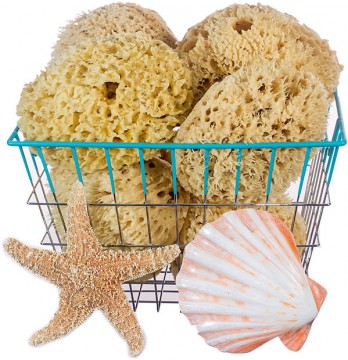
$10.99 – $21.99Price range: $10.99 through $21.99
Experience the Luxury of Nature with our Florida Rock Island Wool Sea Sponge, sustainably harvested from the Gulf Coast of Florida. Renowned for its softness, density, and durability, this premium sea sponge is perfect for skincare, cleaning, and artistic applications.
-
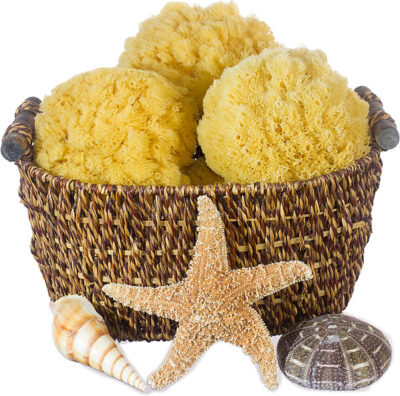
$6.99 – $12.99Price range: $6.99 through $12.99
Naturally Soft, Absorbent & Hypoallergenic
Our Caribbean Grass Sea Sponges are hand-harvested from the warm waters of the Caribbean, Gulf of Mexico, and Florida coast. Known for their soft texture, durability, and absorbency, these natural sponges are an Eco-friendly alternative to synthetic sponges.
-
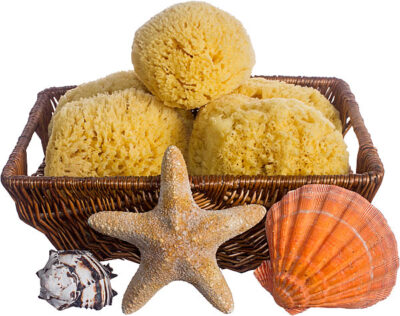
$6.99 – $12.99Price range: $6.99 through $12.99
Natural Cleansing for Bath & Shower
Enjoy the perfect balance of softness and gentle exfoliation with our natural Yellow Sea Sponges. Softer than Caribbean grass sponges yet slightly firmer than wool sponges, they create a rich lather with body wash or scrub for a refreshing, natural clean.
-

$6.99 – $11.99Price range: $6.99 through $11.99
The Absolute Softest Sponge for Your Baby
Give your baby the gentlest and safest bath experience with our hand-selected premium wool sea sponges. These ultra-soft, natural sponges are perfect for delicate infant and toddler skin, providing a soothing and luxurious lather. Sustainably harvested and biodegradable, they are an Eco-friendly alternative to synthetic bath sponges.
-
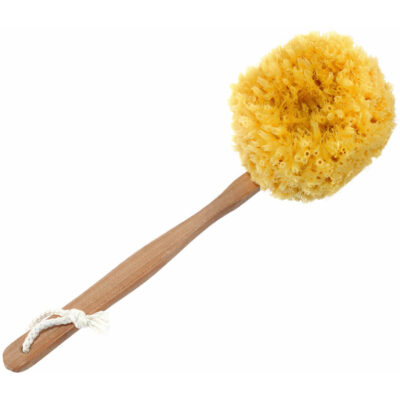
$17.99
Caribbean Grass Sponge Back Scrubber offers gentle exfoliation and deep cleansing with its soft, absorbent grass sponge head. Paired with a sturdy wooden handle, it makes reaching and refreshing hard-to-reach areas effortless, leaving your skin smooth and rejuvenated. Perfect for everyday bathing or spa-like relaxation.
-
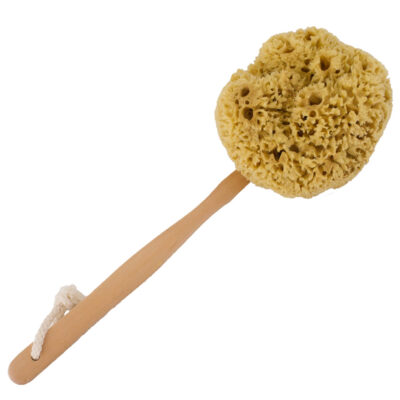
$24.99
Sponge on a Stick with Detachable Head. Length: 17″ Width: 5″.
Natural Wool Sea Sponge bath brush.
-
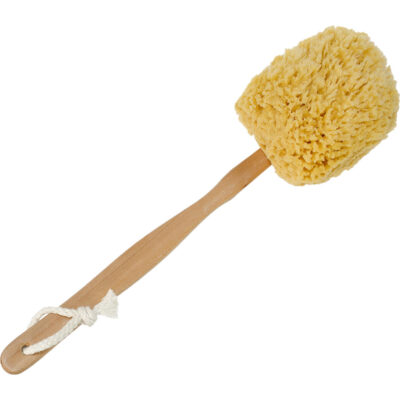
$18.99
Yellow Sea Sponge Back Scrubber
Take your bathing routine to the next level with our Natural Yellow Sea Sponge Bath Brush on a Stick. Made from 100% natural yellow sea sponge and designed with a long stick handle, this brush delivers an exquisitely soft and luxurious bathing experience. The included hang-dry rope ensures convenient storage and quick drying.
-
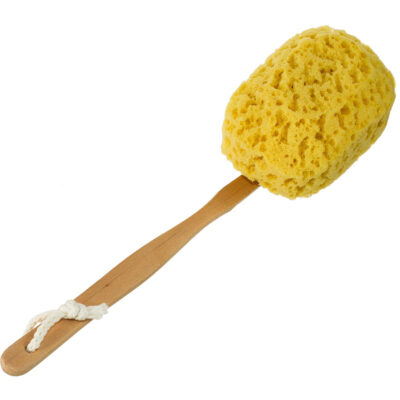
$8.99
Premium Faux Sea Sponge Bath Brush on an 17 inch long handle.
Discover a bathing experience that indulges your senses and effectively cleanses your body. Our premium faux sea sponge bath brush on an extendable stick is designed with a user-friendly grip and long handle for an effortless and efficient bathing routine. This versatile tool is perfect for exfoliating, massaging, and applying bath or shower gel.
-
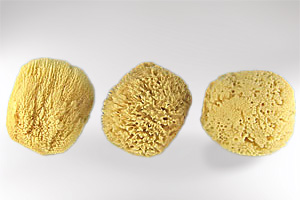
$12.99 – $39.99Price range: $12.99 through $39.99
Includes Yellow Sponge, Caribbean Grass Sponge, and Sea Wool Sponge
Can’t decide which natural sea sponge is right for you? Our Sea Sponge Sampler is the perfect way to experience the unique texture, absorbency, and feel of three of our most popular varieties—all in one convenient set.
Choose from a set of small 3-4″ (craft sized), medium 4-5″ (small/children’s bath size), large 5-6″ cuts (standard bath size) or luxuriously extra-large 6-7″ cuts.
-
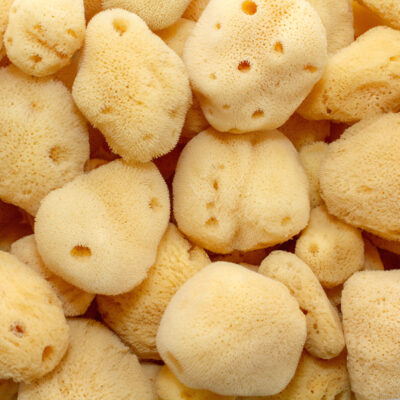
$4.99 – $21.99Price range: $4.99 through $21.99
Silk sponges from the South Pacific. Soft, smooth, but not as durable as the other silks. Reasonably priced for quantity purchases. South Pacific silks come in a variety of sizes and quantities.
-
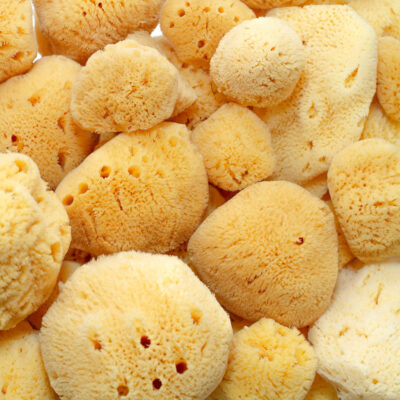
$3.49 – $7.99Price range: $3.49 through $7.99
Caribbean Silk Sponge: Silk sponges are the softest and densest sponges one can buy. They are small and are primarily used for the application, removal of make-up and facial cleansing.
Unlike Mediterranean and Pacific Silk Sponges, these sponges have a slightly rough texture to them, making them a great sponge for lightly exfoliating facial cleansing.
Caribbean Silk Sponges on average grow to 4″ and are therefor not large enough to be used in the bath or shower.
-
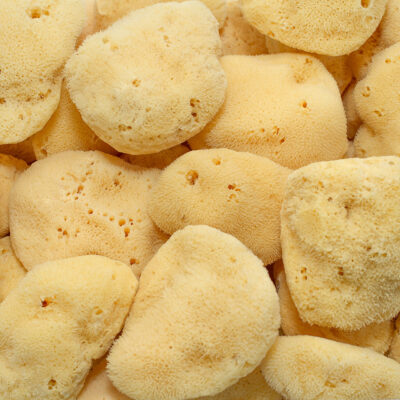
$3.49 – $15.99Price range: $3.49 through $15.99
Mediterranean Silk Sponges are the perfect answer to soft, gentle applications of cleansing creams, foundations and other facial related cosmetics. These are the softest, densest and have the finest pores of the silk sponge varieties.
-
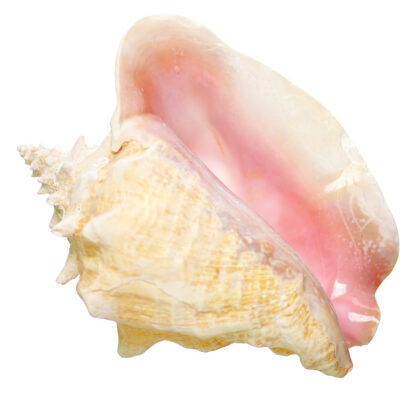
$24.99
Decorate with the Slit-Back Pink Conch Shell, the traditional conch shell.
-
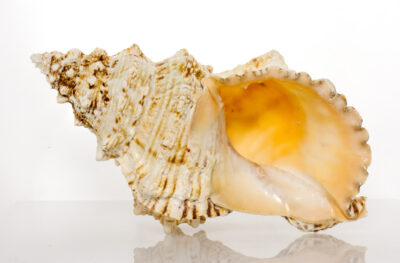
$36.47
Decorate with this rare, beautiful Sea Shell.
-
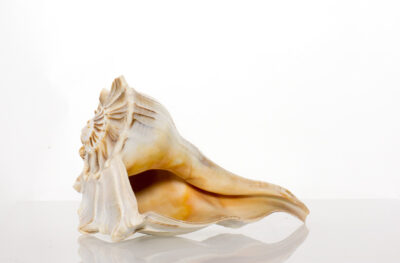
$12.47
Decorate with the Florida Lightening Whelk, one of the only “left-handed” Florida conch shells.
-
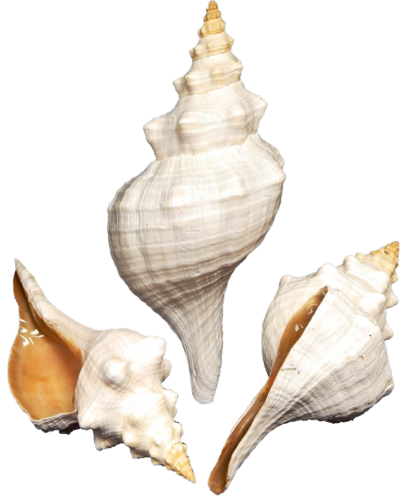
$51.47
Decorate with the Florida Horse Conch 12″- 14″ By SeaSationals
-
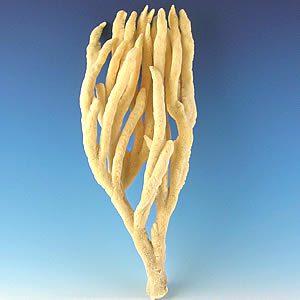
$7.97 – $11.97Price range: $7.97 through $11.97
Finger Sponges are extraordinary sponges used for decorative purposes. Aquariums, rooms with a tropical / ocean and island themes.
-
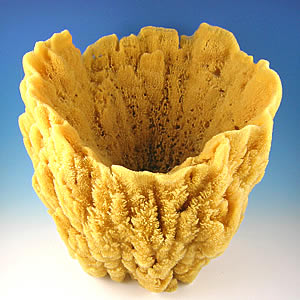
$15.99 – $69.99Price range: $15.99 through $69.99
Vase Sponge: These uniquely shaped sponges make perfect accent pieces as they are large and beautiful. They are a conversation piece and are perfect when used as a gift basket to hold other sponges, bath and spa products. Makes a perfect bathroom accessory.
-
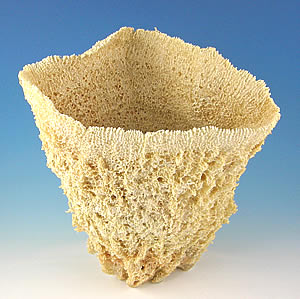
$17.99 – $23.99Price range: $17.99 through $23.99
Wire Vase Sponge: Another unique Florida Sponge. Great for display, all have large amounts of storage similar to standard vase sponges. Wire Vase Sponges all have stunning shapes and textures. These sponges are are perfect for decoration.
-
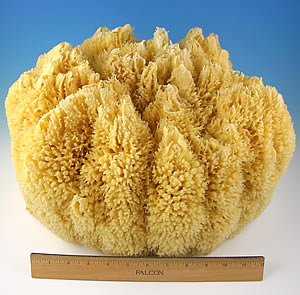
$99.97
Another beautiful display sponge. These sponges are sea wool sponges that are simply too beautiful and perfect to cut into bath sized pieces. If you have a showplace bath, or a nautically themed room, this is the ultimate sponge to get.
-
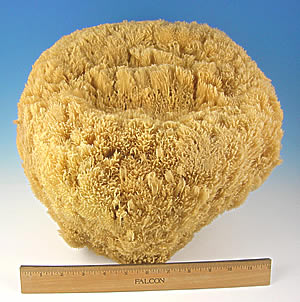
$49.97
Hudson Grass Display Sponges are harvested in shallow water off the West Coast of Florida. Extremely eye catching and a conversation piece. The varieties look somewhat like large hats. Click on the “images” tab to see other examples of Grass Display Sponges.
-
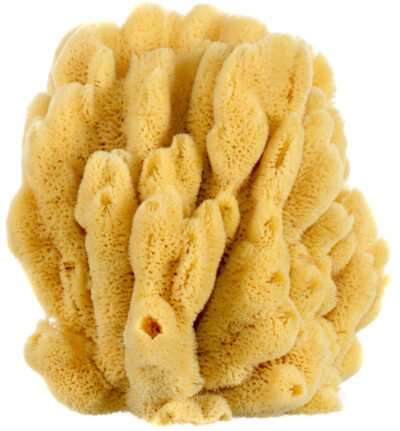
$29.99
Another beautiful and unusual decorative display sponge.
These sponges are close relatives of the Caribbean Silk sponge and when harvested when smaller can be a substitute for them. The Bahamian Sponge Divers affectionately call them Dog Heads and their close relative, the Caribbean Silk sponges, are called Hard Hats. When small, the way to tell them apart from the Caribbean Silk sponge is by how much denser their structure is, but unlike their Hard Hat cousin they don’t stop growing when they reach 6″, but keep growing until they reach 12″ or more.
These sponges are harvested in the Bahamas and we sell them in a medium (7-10″) and a large (10-13″) sizes.
-
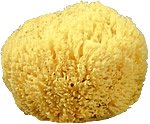
$12.49 – $14.99Price range: $12.49 through $14.99
For the person who has everything, these are beautiful & rare, uncut exfoliating bath sponges. Choose from grass or yellow sea sponges and two different sizes. Be aware that the large 6-7″ forms are an absolutely HUGE sponge and will take a significant time to dry between usage.
-
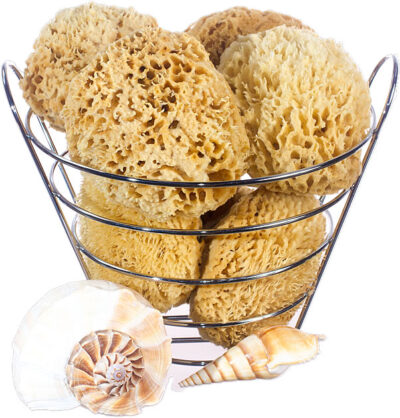
$7.99 – $16.99Price range: $7.99 through $16.99
Prime Sea Wool Sponges are harvested from Key West & the Bahamas. These natural sponges, with their super soft texture, are perfect for daily shower use by gently cleansing your skin when combined with a bath & shower gel or body wash.
-
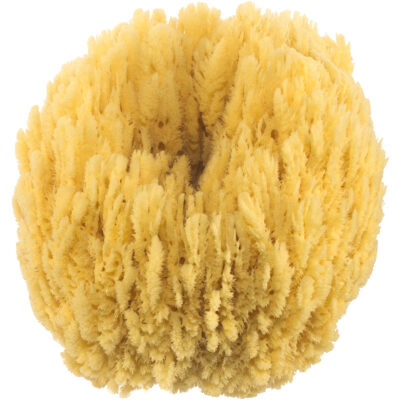
$8.99 – $16.99Price range: $8.99 through $16.99
Glove Sponges are known for their distinctive texture and center hole. Use it to display plants or moisten them and grow whatever you imagine. Insert a potato, lentil bean, air plant or orchid and watch it grow wild.
These sponges are not durable enough for bathing or general cleaning, they prefer to be used decoratively.
Glove sponges are sustainably harvested either from the Florida Keys, or the Bahamas.
-
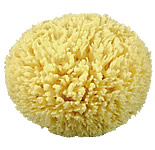
$9.99 – $32.39Price range: $9.99 through $32.39
Rock Island Wool are the premium grade sea sponges used for cleaning your car, boat and your horses and Ponies. Use the smaller sizes to clean and apply conditioner to your tack and saddles, the larger ones for keeping your horse, car and boat looking its best.
-
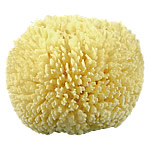
$7.99 – $29.99Price range: $7.99 through $29.99
Prime Sea Wool Sponges: The perfect sponge for cleaning your car, boat or pony / horse. Use the smaller sizes for cleaning tack, saddles and applying leather conditioner.
-

$2.77 – $10.97Price range: $2.77 through $10.97
Caribbean Grass Sponge: Grass sponges are soft, fairly absorbent and make for a great craft sponge. Their texture is very fine, so for sponge painting they are not the best choice (wool sponges have the best patterns).
-
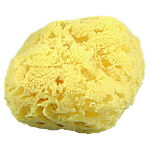
$2.77 – $13.77Price range: $2.77 through $13.77
Yellow Sea Sponge: The name comes from its beautiful bright yellow color. It’s firm, absorbent and durable. Yellow sponges are a multi-use sponge and make for a great craft sponge. Select from a variety of sized cuts for your project.
-
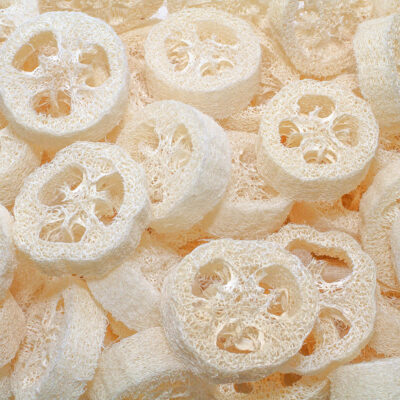
$0.69 – $0.89Price range: $0.69 through $0.89
Loofah Slices cut for soapmaking, craft projects, and the larger slices make great shower/bath or cleaning sponges.
Loofah cuts are priced per piece, we bag the quantity you select in large zip-lock bags. Simply select the size cuts desired.
Choose from:
- 2.5″ – 3″ inches in diameter cut between 7/8″ and 1″ inch thick slices.
- 2.5″ – 3″ inches in diameter cut into 1.5″ inch thick slices.
- 3″ – 3.25″ inches in diameter cut between 7/8″ and 1″ inch thick slices.
- 3″ – 3.25″ inches in diameter cut into 1.5″ inch thick slices.
Interested in wholesale pricing (200 or more) or custom sized loofah cuts?
Visit our Loofah Cuts Price Quote Request page, or download our printable PDF of the Loofah Cuts Price Request form, fill it out and email a copy to [email protected].
-
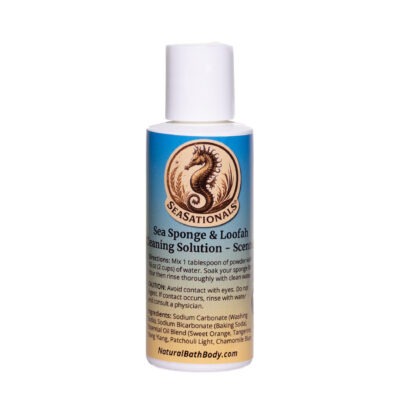
$4.97
EASY WAY TO CARE FOR YOUR NATUAL SEA SPONGE OR NATURAL LOOFAH- Simply mix solution with water and soak sea sponge for one hour, rinse and your sea sponge is ready to use!
GENTLE CLEANING FORUMLA-simple two natural, common ingredients formula for unscented and two ingredients plus essential oils formula for scented option.
PEACE OF MIND – Knowing you are caring for your Natural Sea Sponge or loofah in the most effective and safe method.
SUPPORT A SMALL FAMILY BUSINESS – When you buy from SeaSationals, you are buying from a Mom, Dad and four kids in Tarpon Springs Florida. Our family is grateful for your business.
-
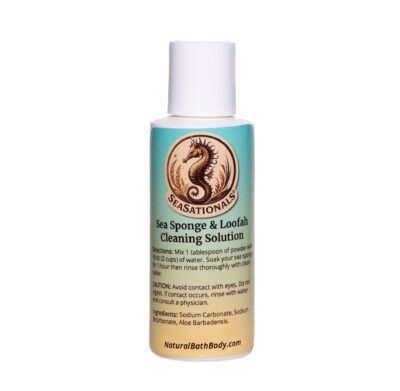
$4.97
EASY WAY TO CARE FOR YOUR NATUAL SEA SPONGE OR NATURAL LOOFAH- Simply mix solution with water and soak sea sponge for one hour, rinse and your sea sponge is ready to use!
GENTLE CLEANING FORUMLA-simple two natural, common ingredients formula for unscented and two ingredients plus essential oils formula for scented option.
PEACE OF MIND – Knowing you are caring for your Natural Sea Sponge or loofah in the most effective and safe method.
SUPPORT A SMALL FAMILY BUSINESS – When you buy from SeaSationals, you are buying from a Mom, Dad and four kids in Tarpon Springs Florida. Our family is grateful for your business.
End of content
End of content




































